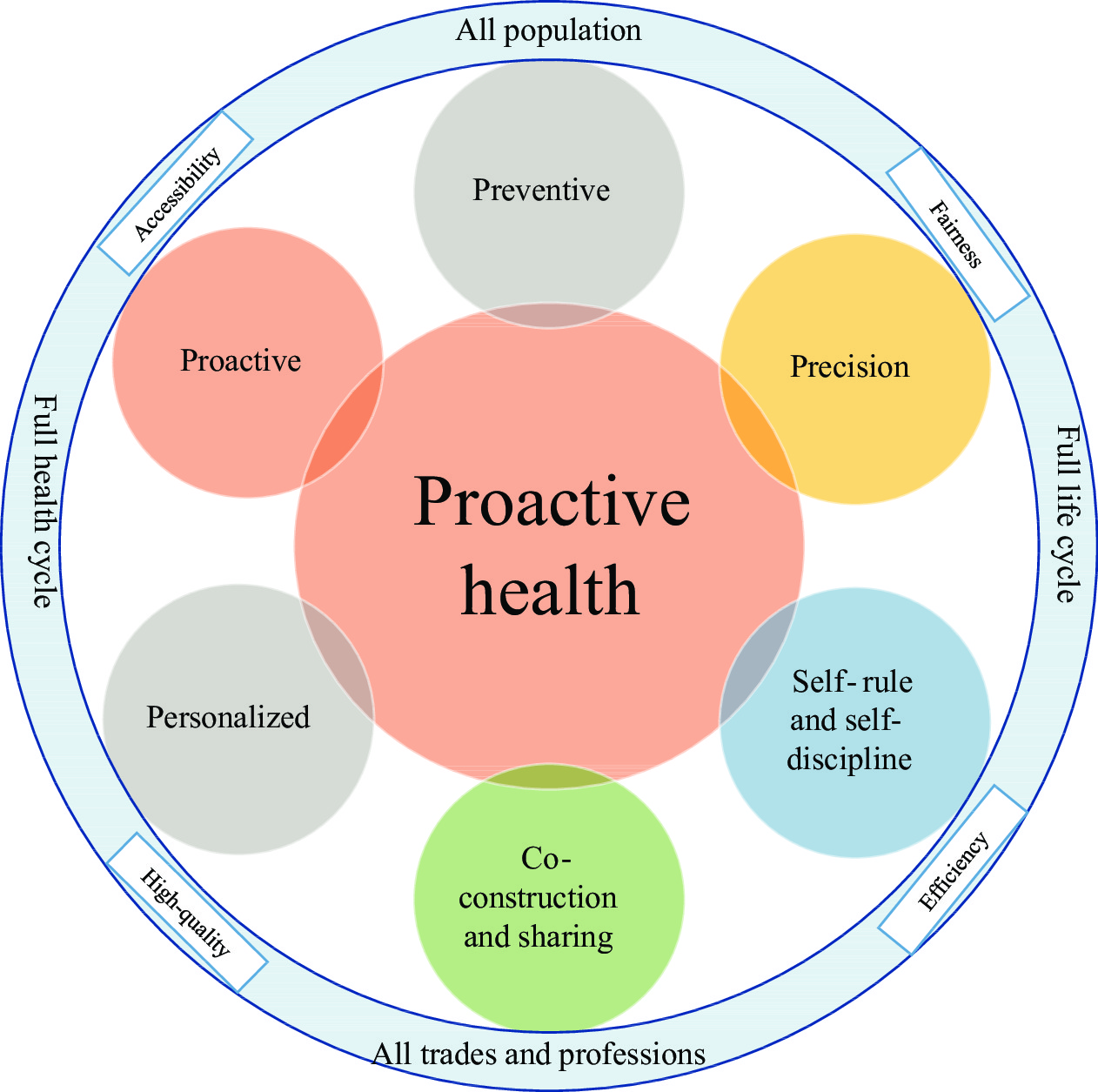2022 Vol. 4, No. 36
Proactive Health has become a new service model to improve human health. Although the concept of Proactive Health has been proposed by the Outline of the Healthy China 2030 Plan and the Healthy China Initiative, the lack of a unified definition of Proactive Health in China’s academic community is still the most fundamental and critical deficiency. Therefore, based on the concepts of Proactive Health, this study analyzed and described the natural characteristics and implications of Proactive Health to establish an exact definition.
The United Nations General Assembly adopted the 2030 Sustainable Development Goals (SDGs) in September 2015. Through this, governments have also committed to universal health coverage (UHC) as a development sub-goal within the SDG health field (1-2). In its effort to fully safeguard universal child health, China has established a management system for child healthcare to provide all children with continuous healthcare services starting at birth. Since 1950, China has implemented a system of local physicians who take responsibility for child healthcare services within their areas. Under the three-tier management system at the county, township, and village levels, every newborn is included in the child health management system starting immediately after birth. The urban and rural community-based health facilities in the area provide unified, standardized, and systematic healthcare services. Moreover, since 2009, child health management has been included in the National Essential Public Health Service Program, which mandates that community-based primary health facilities provide free health management services for children 0–6 years old in their area. This has led to equitable and comprehensive coverage of health services for these children. When children enter school at the age of six, they receive an annual routine physical examination at school. In 2020, the national coverage for neonatal visits, the health management rate for children under 3 and the health management rate for children under 7 all surpassed 92%, while the prevalence of stunting among children under 5 continued to decline. In addition, urban-rural disparities in major child health indicators have also narrowed significantly. Moreover, the inoculation rate of children in National Immunization Programme Vaccines has remained over 99% since 2011 (3).
Neonatal asphyxia is a leading cause of neonatal death that is largely preventable with neonatal resuscitation techniques. In July 2004, China launched a 15-year, three-stage Neonatal Resuscitation Programme (NRP) with stages in 2004–2009, 2011–2016, and 2017–2021 (1). The objective of China’s NRP was to ensure the presence of at least one trained attendant proficient in neonatal resuscitation at every delivery. With consistent effort, both incidence and mortality from neonatal asphyxia decreased remarkably during 2003–2020: incidence decreased from 6.32% to 1.42% and mortality decreased from 0.76‰ to 0.19‰ (1–2). China’s empirical experience shows that widespread promotion of high-quality neonatal resuscitation techniques can reduce preventable neonatal deaths and provide important insight into “ending preventable deaths in newborns by 2030,” as proposed in the United Nations Sustainable Development Goal’s third target (3).



 Subscribe for E-mail Alerts
Subscribe for E-mail Alerts CCDC Weekly RSS Feed
CCDC Weekly RSS Feed

